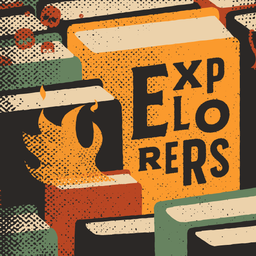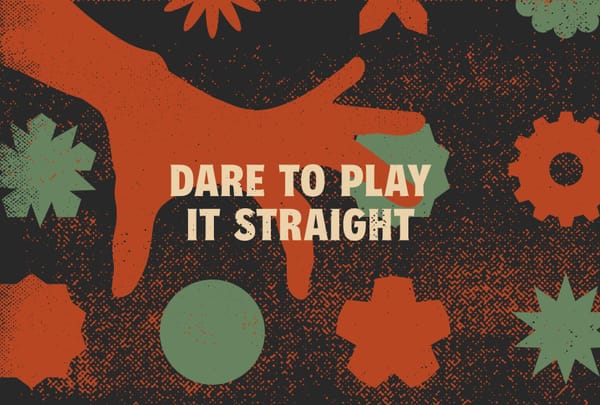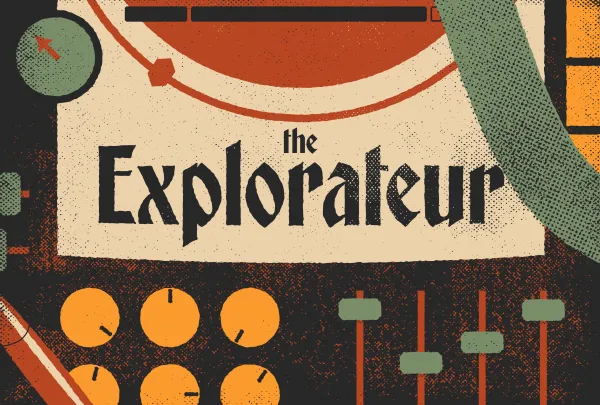How Do the Ennies Work?
An insider's look into the 2025 Ennie Awards. Part two. What is the award process like behind closed doors, and how do the judges select nominees?

The Awards Debrief: Part 2
If you haven't read the intro to this series, I beg you to start there. It's a short but crucial primer on what to expect in the series (and my goals). Part 2—the article you're reading now—is an overview of my experience as an Ennies judge, what it's like, how it works, and what you can do to get nominated.
The Awards Debrief
- Part 1: Why am I writing a debrief?
- Part 2: How do the Ennies work? ← You are here.
- Part 3: How are the Ennies designed?
- Part 4: Where do rpg awards go next?
Paid subscribers get 1-day early access to articles.
The Ennie Awards timeline.
Before we start the overview—let's look at a timeline. The Ennies are a year-long process with dates that fall throughout the year. The reason for this is straightforward albeit maybe a little unintuitive—it's structured around the ceremony at Gen Con.
Here's the timeline from a judge's perspective:
- Get elected at the ceremony. Gen Con (August).
- Sign an NDA and get onboarded. (October)
- Receive and review submissions. (October - April)
- Submissions deadline closes/opens. (March)
- Make a shortlist of nominations. (April - June)
- Finalize the nominations. (June - July)
- Nominations announced. (July)
- The public votes on nominations. (July)
- Winners are announced at the ceremony. Gen Con (August)
#1 Get elected at the ceremony.
In the Ennies, judging is a publicly elected position, which means, if you want a seat on the panel, you have to win it. That makes it pretty unique among awards (and creates a lot of knock-on effects). Your judges have to be the right mix of popular and lucky to sworn in.
Now, you might be thinking, "How rigorous is the process for getting on the ballot?" As far as I can tell, it's not too rigorous. Whatever you put on your application is what ends up on the bio next to the dozen other candidates. (Something I wish I knew when I wrote my long answers!) If there's any vetting by the coordinators, it's probably to make sure you're not a bot, breaking the rules, or a loud and proud liability. I don't have any insight into this beyond what happened for me, so read this with a grain of salt. It's hard to tell how often applicants are scrutinized or removed from the pool.
The process begins and ends alongside the other categories in the public vote, so just like best cartography or best play aid, you'll find out you won at the ceremony—or if you're like 99.9% of people who can't attend—via social media. I found out on Discord when one of the ceremony attendees tagged me. It was an awesome and semi-surreal thing to see on my phone's lock screen.
#2 Sign an NDA and get onboarded.
Judging doesn't begin until everyone signs an NDA, a non-disclosure agreement that bars judges from talking about the Ennie Awards, its process, the submissions, or anything outside of the judges' meetings. This is probably why you never hear from judges once they get in, and one reason you might not hear from them after. Other reasons this might be your first inside look into the Ennies:
- Many Ennies judges resubmit and judge again. According to the rules, you can serve two years in a row before taking a one year break. So, if you want to serve again, you might theoretically never be out from under the NDA.
- Most judges have a recreational relationship to the Ennies and don't make this their hobby. The same way most people don't blog about baseball or their volunteer work. They're not designers, publishers, or critics. They're just regular people. I'm aware writing a debrief on an rpg award show is a little like writing an expose on the national duck stamp competition.
- Judges tend to have niche audiences, so it makes sense some might have shared a lot about the Ennies without others noticing. I'm hoping this debrief prompts people to link and share other perspectives online. I found one through some google searches, but I don't want to share it here and open up old wounds.
So, how do I feel about the NDA? A little mixed. I'll unpack my feelings in the next article. For now, I want to point out that NDA's are normal. You can't run something like this with judges openly talking about the process as it's happening. That said, I think there are clauses in the Ennies's NDA that effectively prohibit the kinds of judges many people would want.
#3 Receive and review submissions.
Once all NDAs are signed, the judging starts. The coordinators ship any submissions that were dropped off at Gen Con, and then from October until the deadline in March, submissions gradually trickle in. You read and sort them as they come in. And wow, I cannot stress how important it is to keep up.
In autumn, a book or two arrives every two weeks. Then, as winter rolls in, it's one submission a week, then two a week, sometimes three. By mid to late spring, it's at least one parcel a day. Right before the deadline, they flood in. One day in March, I got five boxes and almost 100 lbs from UPS alone. My carriers started calling me The Book Guy. My mailman would walk up to my door and yell, "We got one from the UK today!"
If this sounds like a lot to keep track of, you'd be right.
In the background, the judges and coordinators keep itemized receipts. Every time a package arrives (or a pdf is downloaded), we match and date its arrival in Google Sheets whose formulas are beyond my ken. These submissions auto-populate and notify the judges by email as they're submitted. If there are any discrepancies, we let the coordinators know.
Some of the regular issues we caught through this process:
- Submitters regularly sent books that weren't the ones they put on the form.
- Sometimes alternate (re: incorrect) names were put on the submissions.
- If a package didn't arrive shortly after processing, we flagged it as missing.
- Some books arrive damaged. This process helps flag and notify publishers.
#4 Submissions deadline closes.
This year, the deadline was March 31st, which marks the last day products can be published and submitted to that year. Anything submitted after that period is for next year's Ennie Awards. This deadline also signals the end of the submissions flood, and the start to the official scramble to decide on finalists.
Throughout the year, the judges communicate exclusively over Facebook and Zoom (if this has you scratching your head, you'll have to read part three). In the Fall, these meetings are few and far between—one or two meetings a month. By late spring, we were meeting weekly, sometimes two or three times a week.
In those meetings, the judges bring unofficial shortlists or "new business" for the night, that's anything they thought were worthwhile from recent submissions. Sometimes these submissions take a while for judges to read, play, and form an opinion on, so it's always a mix of new and old arrivals. For example, sometimes a judge might get something before anyone else and have to wait a week or more before talking about it in depth.
There are three things you probably don't know about the judge's process:
- There is no prescribed criteria. Every year, the judges are left to decide how they want to weigh and nominate the submissions. The only thing the coordinators insist on is that we look past any biases—namely any against D&D or "trad" games. And they're right to do this a little bit, I've openly kvetched about Hasbro and people who promote its products. The coordinators were worried we'd dismiss deserving games without reading them. This year, I think it's safe to say we gave equal effort to everyone—with the added benefit that we've played a lot of D&D, Pathfinder, etc. More than anything else.
- Dialogue dominates the process. There's no rubric, scorecard, or order of business. Everything is just too different and multifaceted to share a universal metric like "playability." Everything is discussed when it arrives, standouts might get shoutouts through messenger, but the deliberation is always on calls. We talk, debate, make speeches, interrogate each other's choices, and negotiate every step of the way. It's a process with no rigid scaffolding.
- We talk at length about categories. The judges have to sort the submissions, which means we're constantly trying to decide what submissions are. It's not always obvious that a book is a supplement, or that a capsule game isn't an adventure. Pair that challenge with the fact many games can fit in multiple categories, and you have a pretty complicated puzzle to piece together.
- The categories can change. Judges can suggest condensing or separating categories depending on how competitive the pool is. For example, if there hadn't been enough submissions for digital play aids, we could ask for it to be combined with non-digital play aids. Similarly, at the start of the judging process, we can create categories if we think it's warranted. Though this offer was eventually rescinded because we weren't condensing anything, and this year's Ennies were very conscious of bloat.
#5 Make a shortlist of nominations.
I was an overzealous judge. From the moment I started, I wanted a working shortlist of 20+ submissions for every category. I kept one for myself just to remember what was bubbling to the top and eventually created an entire filing system involving multiple shelves, boxes, and a clipboard. That way, when we got one of the many submissions, I could compare it to everything I reviewed before it.
This year, the Ennies received over 1000 submissions. Most of them rpg systems, supplements, and adventures. Some of them were short, but most of them were at least 50+ pages—sometimes 300+ pages long. With over 1,000 submissions and fewer than 300 days to review them, it's impossible to give everything the level of attention it deserves, so, we had to be calculating.
For small zines, fewer than 30 pages, I'd read them cover to cover. If it was a larger traditional hardback, I'd read the first 30 pages, then skim for anything that stood out in the categories. If something sparked my interest, I'd set it aside for further reading, usually with a note and matching tags on a Notion file. In addition, I printed off the Ennies categories and had them nearby as a reminder. That way, while reading, I could regularly ask myself, "Is anything here ticking a category?"
If another judge brought up a submission outside of my personal shortlist, I'd pull it out of the general pool and set it aside for re-consideration. In this way, a lot of submissions got read, re-read, dummy played (by myself) or played for real with my friends—but that last option was rare. It's hard to read 3+ submissions a day and prep sessions. I relied on word of mouth and play reports to help organize my time. If it was being discussed by people I respected on podcasts or YouTube, I'd make a note to revisit it during my nightly reading. Sometimes a book or zine doesn't stand out on the first reading, so we regularly revisited submissions based on other judges' recommendations or dialogue online. I don't want to drag the other judges into this debrief with me, but needless to say, I was grateful for a lot of their perspectives. Our combined interests led to a very diverse list of nominees.
#6 Finalize the nominations.
The final nominees come together in the last three weeks of judging. It's around this time, judges look at a shared spreadsheet and start proposing their favorites for the 21 categories. There was a lot about this process I didn't like. The "horse race" that starts in the final weeks is hectic and makes broader conversations almost impossible—the exact kind of discussions that make it easier to bring up potential underdogs or things that are overlooked. It also means that I regularly overlooked or ran out of steam on certain entries.
On the official spreadsheet, provided by the coordinators, every judge gets 7 slots to fill. Their proposed 5 nominees and 2 alternates. Then, the judges debate, make speeches, and either concede or convince the others to do it. It's not an easy process and requires a bit of political maneuvering. In multiple instances, I had to pick and choose my battles—I didn't want to sacrifice my goodwill on one category and then lose my influence on the others. Every judge has their horse, and sometimes I'd trust others judgements and endorse their picks. This is a process that happens in every award show from movies to design. The process is subjective and the criteria is relative, so there's a lot of calls to reason, emotion, and brokering between judges. But it's not competitive. It's more like collaboration.
I have a lot of opinions on this process, and especially the work leading up to it, but I'll save that for part three. Instead, I want to address some of the bugbears in the room, when it comes to making nominations.
- Representation is king. Because the Ennies are a broad award show, we were constantly looking to represent multiple communities. It's like comparing apples and onions, but instead of trying to decide which is best between them, we decided to to pack every category with the best apple, orange, onion, cactus etc. This approach provides a broader look at the industry-at-large, and encourages weighing games on their own merits, but it also leads to a lot of incoherence when you try to compare these nominees each other.
- Some categories favor a genre. Despite our desire to showcase "excellence" everywhere, some categories are naturally suited for a specific play culture. For example, old-school games regularly dominate the adventure categories—because that's what the OSR/NSR focuses on. There's an entire culture of blogging, critique, and scholarship just in old-school adventures. Similarly, storygames tend to dominate best writing, because that's what many of its designers focus on, and what their rules leave room on the page for.
- Category "sandbagging" is a constant threat. This is my personal term for how the popular vote favors, or "weighs," popular games against everything else. In a people's choice award, this isn't a bug, it's a feature. (A feature I don't like, but that's me.) Popular voting means you run the risk of making the show hyper-focused on a small group of people. It also means judges have to be 100% certain about a nomination—"Only nominate products you think should win gold, because if you put a popular game on there, they will win it regardless."
- Popularity is hard to predict. Knowing how much popularity can overshadow others in the popular vote, we tried our best to read the room. And we failed. We knew, for example, that Triangle Agency, Yazeba's Bed & Breakfast, and other games would be popular—but I thought they were equally popular going into nominations. Mythic Bastionland, meanwhile, felt more niche until Quinns Quest reviewed it after our nominations were locked in.
#7 Nominations are announced
After locking in, it's a lot of waiting. When the nominations are announced, the public is going to react, and the judges either fast from the internet or get drunk on it. Some people are excited by the picks, while others hate them and start to theorize what accident gave us all the same head injury.
There were the usual scandals this year. Not enough of a particular play culture—or too much. A game in a category it shouldn't be in (like Mythic Bastionland in layout, which I'm not sure how past me did that). Too many unpolished amateurs. Too much uninspired corporate sludge. Winners feeling like they didn't win enough. Losers feeling like their loss was everyone's loss. Name misspellings. Missing credits. The list goes on and on.
Despite all that, this year felt pretty good. The nominations were diverse and I think very brave compared to some years. Most people probably didn't know half of the nominees, which I think indicates how much good stuff is going unnoticed. We had our usual negative reactions, but we also saw lots of positive surprise from the more indie corners of the industry.
There are two things to know about the nominations.
- Getting nominated is still winning. That was my perspective, anyway. When the nominations list is so few compared to the submissions, getting picked out of a couple hundred amazing games is a huge achievement.
- The list is a collaborative one. If every judge would have made a different list in isolation. The final nominations are made out of collaboration and compromise. I personally didn't like everything that got nominated this year, but that's why other judges exist—to compile the apples and onions.
#8 The public votes on nominations.
There's not much to say about the process after this. A week after the nominees are announced, the voting starts. During this time, the public submits their votes on the Ennies website, and it's tracked via ISP. I'd be curious to see the raw data from this process, but it's safe to assume there are fewer voters in the Ennies than in most non-rpg award shows. It's still a niche show in a very niche hobby.
In previous years, the voting portal has broken down, sometimes dumping all the votes leading up to that point. Fortunately, this year was uneventful. People voted and the winners were announced without issue.
#9 Winners are announced at Gen Con.
99.9% of people who follow the Ennies do so digitally. Only a fraction of participants attend the actual ceremony in Indianapolis. This year, I finally joined that small group. For the uninitiated, Indianapolis is the fading memory of a city, dominated by business men, the Pacers, and the Colts. The downtown is actually quite majestic despite being a ghost town controlled by parking authorities. It's one of the many midwestern, mid-sized cities still filled with massive monuments and sweeping architecture.
The ceremony is held in one of these buildings, Indianapolis's own Union Station, and just being under the vaulted ceilings and Corinthian columns lends the Ennies some extra history, prestige, and decadence. It's a geek version of the Oscars and feels like it. A little scrappy, a little silly, and plagued with tiny clumsy executions—but a ton of fun. Some of the audience is dressed like wizards, the winners always look a little put out, and two volunteers wearing elf ears drape medals onto them.
It turns out, filling a beautiful room with beer and your favorite designers, publishers, and critics is a recipe for a good time. The best part is easily the moments around the actual presentation, when you're carousing and finally saying all the things people say when you're face to face with flesh blood peopl.
Without spoiling my analysis of the ceremony, I'll say this: I like it. I'd make a habit of attending the Ennie Awards if I went to Gen Con regularly. It's a long show but a fun one. I think the attendees get a lot out of it, but that doesn't translate to the wider audience following along online.
5 Tips for Getting Nominated
Forget winning the popular vote. You need a massive audience, inertia, and luck to do that. Instead, focus on the nomination. It'll get you plenty of attention, and it's something anyone can strive for, regardless of how "popular" the work is.
#1 Show off what makes you different. Fast.
The longer a judge has to read, watch, or listen to understand what your submission is, the less likely it'll rise to the top. Don't overload the front of your book with prefaces, intros, thank you's, safety tools, "what is an rpg," and other details. Some submissions wasted 20 pages or more before getting to the game. Don't do that. Show off the main thing early. If your game's main thing is its setting, theme, or tone, show a quick summary of the rules early. That's what tips the scales. Too many compelling settings used the same 5th edition rules with their names swapped, which effectively splits your submission into two pieces—a novel and a system, and we wanted nominees that married the two.
#2 Send the best version of your work.
If you're submitting a podcast or YouTube channel, submit a highlight reel or unlisted clip edited for time. The submissions form explicitly asks submitters to submit an edited clip, but only a few actually do it. When the Ennies gives you the opportunity to show only the best, take advantage of it. Bloggers, make a page with your best posts and send that. Designers, send the version of your zine or book that's tightest. Don't send the ashcan version. If you believe it's good enough as a draft, imagine how good it will be with some edits. Finally, don't send the deluxe edition if it comes with odds and ends and makes people ask, "What is this?" If a judge can't find the answer within an hour of picking it up, you've failed.
#3 Submit with a category in mind.
Some categories are more competitive than others and having a category in mind helps you guess your odds. Entries that are kind of good in a lot of categories rarely win awards. You have to be a strong contender in one category to win it. Hell, you have to be a strong contender in multiple categories to win just one. The least competitive categories are usually best community content and best online content. Those categories sometimes have fewer than 20 submitters a piece. Anything to do with craft, like layout, art, and writing can feel like complete wildcards. It's all dependent on that year's judges. But you can't plan for that, so just use previous years for rough comparisons and focus on your own internal barometer. And don't forget that your competition is listed online. Whenever someone submits to the Ennie awards, their submission is publicly displayed.
#4 Focus on execution in multiple areas.
Big ideas can make unpolished work shine, and good execution can give you a little wiggle room to make mistakes, but the most competitive entries tend to be strong in multiple categories. Expect your competition to be on multiple category shortlists. That means one thing: try to get everything to a medium to medium-high standard. Put extra time and money into editing. Many great entires have died from too many typos, cut-off sentences, and broken syntax. Remember: best adventure, setting, and rules are also writing categories. Imagine you're a judge deciding between two entries for best interior art—both are excellent—the winner will be whichever entry the judges can say, "This great game with good writing has the best art." The reason is simple: comparison doesn't end with the nominations, it starts there, and when the differences are small, the sum is what people notice. If the Ennies have reinforced anything in me, it's that, developmental editors, proofreaders, and graphic designers are invaluable.
#5 Don't be a complete unknown.
Here's the unvarnished truth: judges can be influenced. They might try to judge in the dark (and some are alarmingly good at this) but at some point they're going to hear about the game their friends are playing, see the Kickstarter everyone is talking about, or watch a video on the latest game with amazing art, writing, and rules. Your goal is to be unmissable. The best way to do that is by making something great. The second best way is by making something popular. The judges should not be the first people to receive your work. Gift it to friends, donate it to libraries, send copies to your favorite designers, bloggers, and influencers. Put yourself out there, be a fan of other people, and connect. Popularity wins the public vote, but it also wins the judges' attention, curiosity, and second chances. Your first win should be getting plays, reviews, and fans. Your last win should be the Ennie Awards.
General Tips for Applicants
- Submit your work between January and February. It gives the judges time to evaluate it without you growing stale in October or being rushed in March.
- Choose uncoated matte paper if you're uncertain. Unless the work needs it, every judge remarked how much they preferred plain old paper.
- Familiarize yourself with games that resemble yours. You'll adopt their positive and negative associations by sharing similar rules, writing, and art.
- Research the judges. The games they play and care about are written in their bios on the Ennies site—that'll give you a good idea what they'll nominate.
- Don't skip the credits page, table of contents, or page numbers. Those are helpful for everyone, but especially judges when they're discussing your work.
- Place the rules or rules summary near the front of the book. Your art and setting are not as differentiating as you might think.
- Don't write a note to the judges unless you're adding context or clarity. If you attached a thank you note last year, don't worry, it didn't hurt your chances.
- When filling out the submissions form, write the name you want shared at the ceremony. The Ennies doesn't make assumptions when compiling nominations.
- Be selective. Don't ship everything. You know what your best work is. Shipping everything buries your best work, costs you money, and exacerbates discovery.
- If you're digitally submitting adventures, settings, or supplements for a core game you make and sell, just add the core rulebook to the zip file.
- Pack your submissions well. Especially if you're gunning for best production.
- Submit physical when your game looks and feels best in physical. If you're trying to win best adventure, writing, or rules—digital is probably fine.
- Use logical and easy to read file names when submitting digitally.
Additional Reading
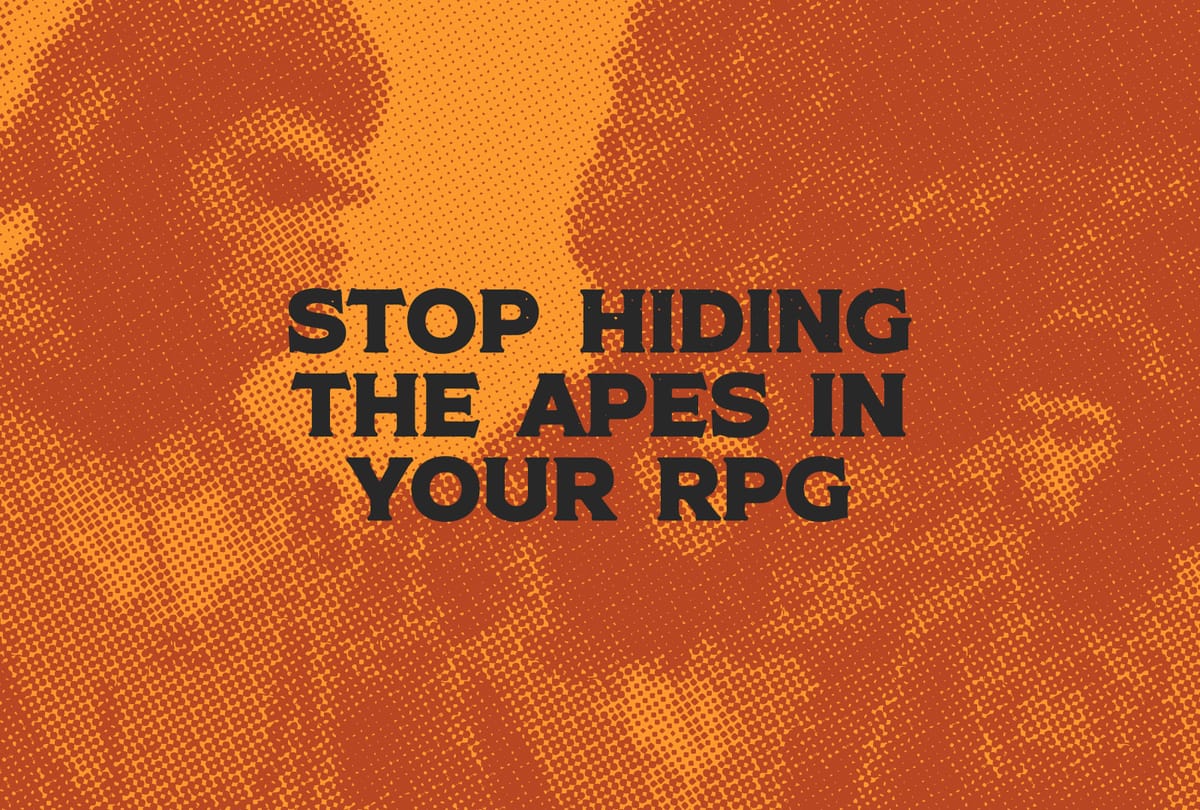
The one thing almost every nominee had in common.
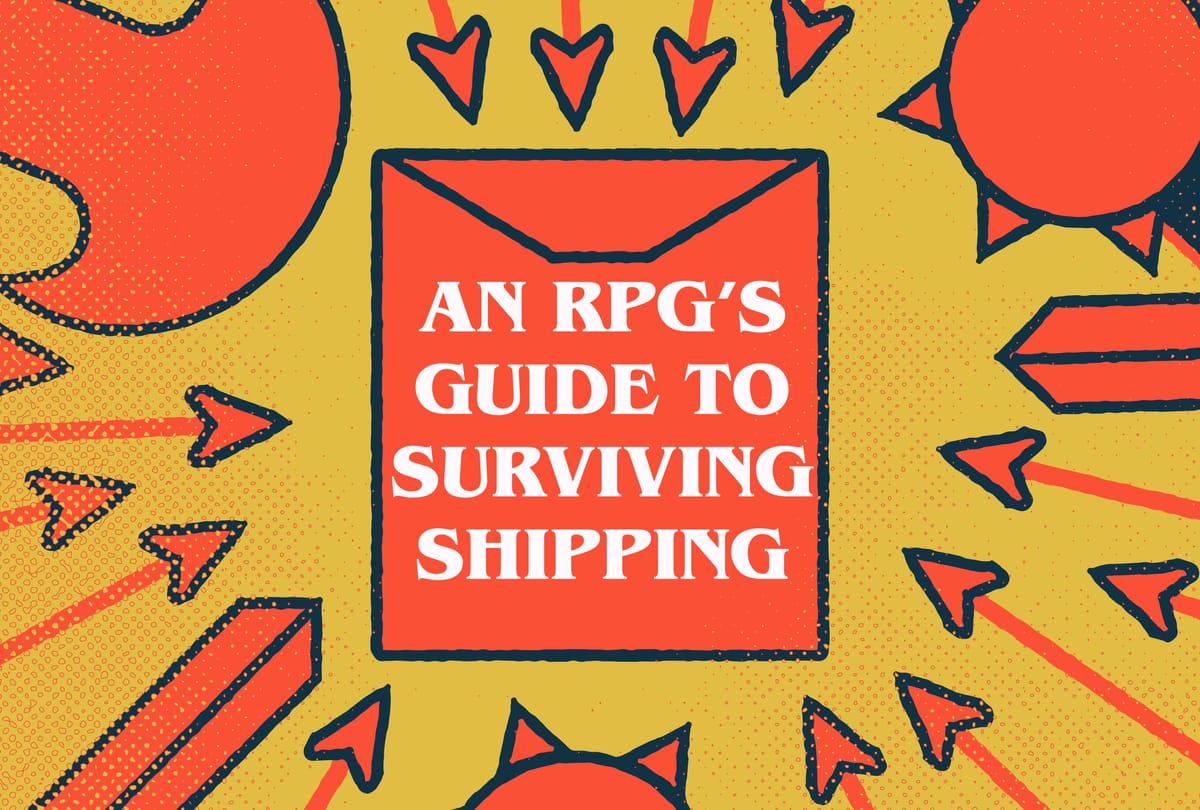
Planning on submitting physically? Pack your books well.

Undeterred? Interested in becoming a judge? Start here.
Closing thoughts for now...
Hopefully, this walkthrough taught you something new. I've lived with the experience for over a year, so I've lost the ability to distinguish what is and isn't interesting. This overview needed to happen before we could get into the weeds. Now that we have a top-level view of how it works, it's time to dig deeper. In part three, we're going answer the question, "How are the Ennies designed?"
Continue reading...





